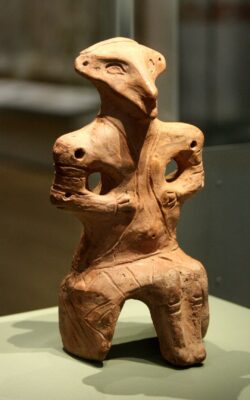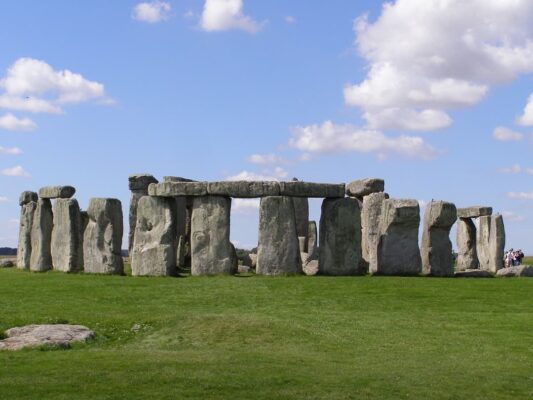Neolithic Europe
The birth of a continent
“Although prehistoric art specialists rarely work comparatively, art historians are familiar with describing continent-wide general developments in visual culture and placing them in social context (…) The principal pattern is a shift from a Neolithic iconic art which uses heavily encoded imagery, often schematic geometric motifs, to a Bronze/Iron Age narrative art, which increasingly involves imagery of identifiable people, animals and objects.”
Svend Hansen: “Neolithic Sculpture. Some Remarks on an Old Problem”, 2001
Images: Vinča figurine, 4500-4000 BC. British Museum, photograph by Michel Wal ·· Stonehenge, 3000 – 2000 BC. Photograph by garethwiscombe
The Neolithic Revolution marked a fundamental change in the history of mankind, from a nomadic to a sedentary existence. This led to the emergence of the first civilisations, and, albeit art had already existed for tens of thousands of years, new forms of art appeared. Subsequently, the introduction of metallurgy during the Bronze Age meant for the history of art the discovery of a material in which several civilisations, from the Mediterranean to Scandinavia, created their first masterpieces.
It should be noted that there is no unequivocal time frame for the terms Neolithic and Bronze Age. They vary not only according to the source consulted, but are applied differently depending on the geographical area studied. For the European Neolithic, we can take the dates proposed by Edvard Ehler and Václav Vančata (“Neolithic transition in Europe“, 2009) for Central Europe: 5500 – 4500 BC for the Early Neolithic, 4500 – 3200 BC for the Middle Neolithic, and 3200 – 2100 BC for the Late Neolithic, considering older dates for the Eastern Mediterranean, and more recent dates for the Atlantic coasts (Pablo Arias: “The Origins of the Neolithic Along the Atlantic Coast of Continental Europe: A Survey“, 1999). In the case of the Bronze Age, which followed the Neolithic, its end is usually placed between 1200 and 600 BC.
In the Balkans, the Vinča culture, in addition to developing one of the oldest known proto-writing systems, created an interesting group of small anthropomorphic and zoomorphic figures. During the Middle Neolithic, the inhabitants of the Thessaly region produced a set of female figures that may be reminiscent of Palaeolithic ‘Venuses’. The art of the Cyclades Islands, a bridge between the Neolithic and the Bronze Age, is studied in the chapter devoted to Greek art. The Cucuteni culture of Eastern Europe created some of the most remarkable pottery of the European Neolithic.
The Neolithic of Western Europe, from southern Portugal to the British Isles, is known for its large megalithic tombs, with such famous examples as the Stonehenge complex (3000 – 2000 BC) and the menhirs of Carnac (4500 – 2000 BC).
G. Fernandez · theartwolf.com
Follow us on:




